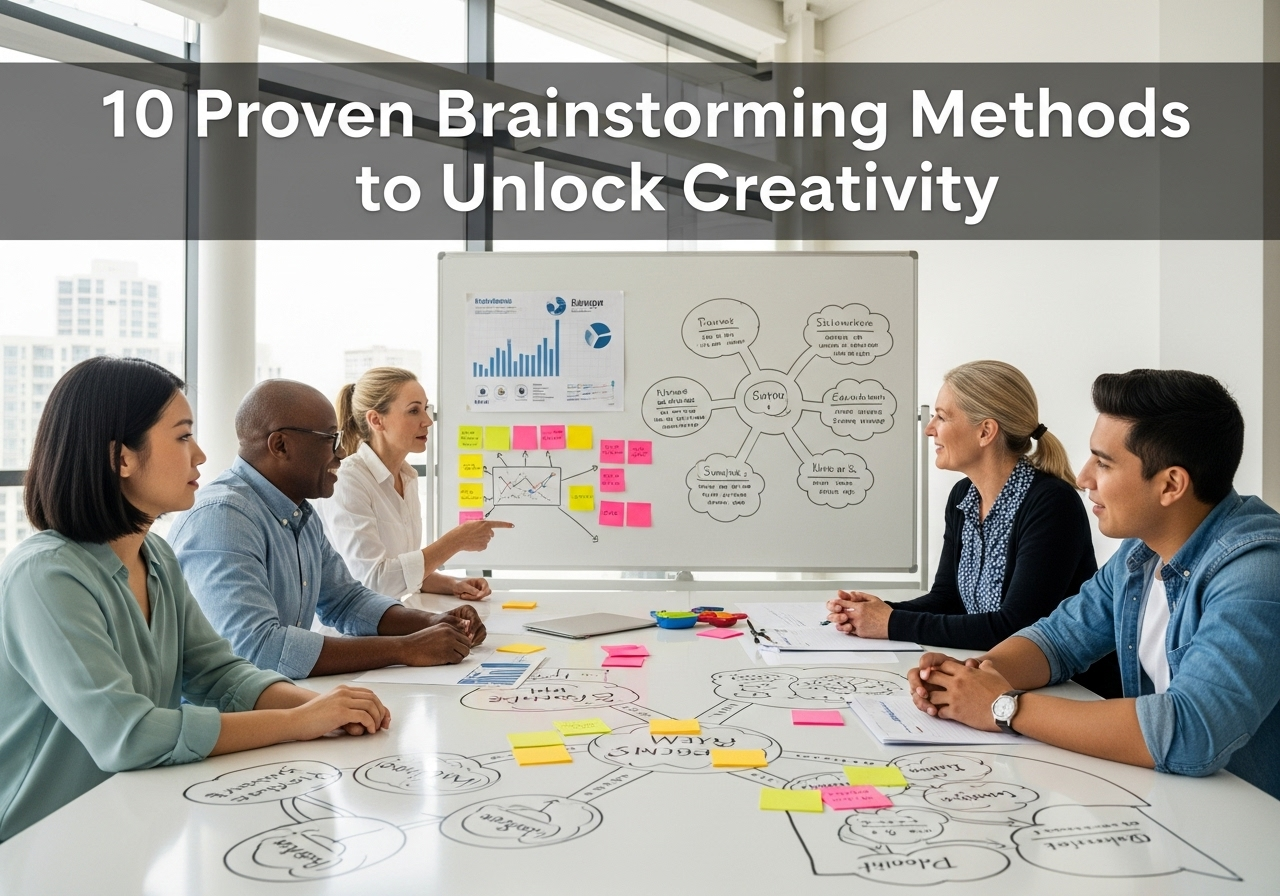How the CDM Suite Marketing Team Turns Brainstorming into Breakthroughs
Every marketer has faced it: the dreaded blank page, the stale campaign, the feeling that the next big idea is just out of reach. What separates top-performing marketing teams from the rest isn’t just talent—it’s the ability to consistently generate and refine bold, actionable ideas. At CDM Suite, our marketing team has developed a systematic approach to brainstorming that transforms routine meetings into engines of innovation. Here’s how we do it—and how you can, too.
The Brainstorming Problem: Why Most Sessions Fall Flat
Did you know that over 60% of marketers say their brainstorming sessions rarely produce actionable results? Too often, meetings get dominated by a few outspoken voices, or teams fall back on safe, predictable ideas. The result? Missed opportunities and campaigns that blend into the noise.
So, what’s the solution? At CDM Suite, we use a blend of structured methods, digital tools, and creative exercises to ensure every voice is heard and every idea gets a chance to shine. Let’s break down our proven process.
1. Start with Research and Context
Effective brainstorming starts before anyone walks into the room (or logs onto the call). We brief the team with:
- Who the target audience is
- Their interests, pain points, and passions
- What competitors are doing
- Key campaign objectives
This step ensures everyone is aligned and ideas are grounded in real audience insights—not just personal preference.
2. Mind Mapping: Visualizing the Possibilities
Mind mapping is at the heart of our idea-generation process. We start with the campaign goal at the center—say, “Boost Q3 Lead Generation”—and branch out into related concepts like content formats, channels, influencers, and themes. Each branch spawns further sub-ideas, creating a visual web of opportunities.
Why it works:
- Helps visualize connections between ideas
- Encourages non-linear thinking
- Surfaces unexpected angles
Pro tip: Use digital mind mapping tools like Miro or a simple whiteboard for in-person sessions.
3. Rapid Ideation: Speed Sparks Creativity
To get the creative juices flowing, we set a timer and challenge everyone to jot down as many ideas as possible in 5–10 minutes. The goal is quantity, not quality—no filtering, no analysis, just pure brainstorming energy.
Benefits:
- Bypasses overthinking
- Uncovers hidden gems
- Levels the playing field between introverts and extroverts
4. Round Robin: Every Voice Counts
After rapid ideation, we go around the room (or Zoom) and have each team member share one idea at a time. No repeats and no critiques—just sharing. This ensures everyone is heard and avoids groupthink or idea domination by a few individuals.
Key advantages:
- Increases participation
- Surfaces diverse perspectives
- Prevents idea monopolization
5. Brainwriting & Brain-Netting: Quiet Power
Not everyone thrives in vocal sessions. In brainwriting, each participant writes down ideas and passes them to the next person, who builds on them. For remote teams, we use brain-netting—collaborative Google Docs where each person adds and iterates on ideas asynchronously.
Why use it:
- Gives introverts space to contribute
- Builds on others’ ideas
- Creates a rich pool of concepts
6. Figure Storming: Step Into Someone Else’s Shoes
Stuck on a tough problem? We use figure storming—imagining how a well-known figure (real or fictional) would approach the challenge. If we’re targeting Gen Z, we might ask, “How would a TikTok influencer promote this?” This method breaks down creative barriers and encourages out-of-the-box thinking.
7. Disruptive Brainstorming: Embrace Constraints
To spark fresh thinking, we sometimes introduce artificial constraints. For example, “What if we only had a $500 budget?” or “What if we had to launch in 48 hours?” These “disrupt cards” force the team to think creatively within new boundaries, often leading to surprisingly effective solutions.
8. Starbursting: Questions, Not Answers
Instead of jumping straight to solutions, we use starbursting—brainstorming every possible question about the project (Who? What? Where? When? Why? How?). This uncovers hidden challenges and opportunities, ensuring we don’t overlook critical details.
9. Role Play & Persona-Based Ideation
We sometimes assign team members specific roles—like “skeptical customer” or “enthusiastic influencer.” Brainstorming from these perspectives surfaces new ideas and helps anticipate objections or enthusiasm points that could shape the campaign.
10. Prioritization and Action Planning
With a mountain of ideas, it’s time to prioritize. We use simple frameworks (like Impact vs. Effort) to quickly identify the most promising concepts. Then, we assign owners and define next steps, so ideas don’t get lost in the shuffle.
Real-World Example: Launching a Multi-Channel Campaign
When CDM Suite planned its recent multi-channel launch, our brainstorming process looked like this:
- Pre-brief: Audience research and competitive analysis
- Mind mapping: Visualized all potential channels and messaging angles
- Rapid ideation: Generated 50+ content ideas in 10 minutes
- Round robin: Ensured every marketer shared their top campaign hook
- Brain-netting: Remote team members built on each others’ ideas in shared Docs
- Prioritization: Used an impact/effort matrix to select the final campaign elements
The result? A campaign that exceeded lead generation targets by 30% and delivered breakthrough engagement across channels.
Tips for Better Brainstorming Sessions
- Set a clear objective for each session
- Mix up the methods to keep things fresh
- Use digital tools for remote or hybrid teams
- Celebrate wild ideas—often they spark the best solutions
- Always follow up with action items and owners
Unlock Your Team’s Creative Power—Starting Today
The CDM Suite marketing team’s approach to brainstorming isn’t magic—it’s method. By blending structure with creativity and leveraging a toolbox of proven techniques, we consistently turn big challenges into big wins. For more tips check out our blog.
Ready to find out what’s missing in your marketing strategy? Take our free 3-minute marketing assessment and get a custom growth plan tailored to your business. Get started now!
Don’t let your next brainstorming session go to waste. Try these methods and watch your campaign ideas—and results—take off.


